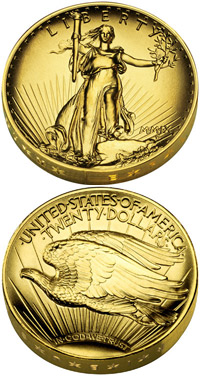 The US Mint recently wrapped up sales of the 2009 Ultra High Relief Double Eagle Gold Coin. The sales officially ended on December 31, 2009 and more recently some final details about total sales became available.
The US Mint recently wrapped up sales of the 2009 Ultra High Relief Double Eagle Gold Coin. The sales officially ended on December 31, 2009 and more recently some final details about total sales became available.
The coin was authorized directly by the United States Secretary of the Treasury back when it was Hank Paulson. The 2009 Ultra High Relief Gold Coin recreates the design from Augustus Saint Gaudens on a one ounce 24 karat gold coin issued in 2009.
The program seemed like it might run into problems since it was being launched amidst an ongoing scarcity of precious metals blanks, but for the most part, the offering went as planned.
The coins were originally offered for sale on January 22, 2009 and were priced at $1,189 each. The coins were limited to just one per household, but that didn’t stop collectors from ordering more than 40,000 coins in the opening five days of sales. A few coins from the initial orders shipped in early February, with a greater number shipping later in the month.
During the course of sales, the price of the coins at the US Mint slowly ratcheted upwards, as the price of gold rose. On November 25, 2009, the coins reached their highest offering price of $1,539 each. This represented a $350 increase from the initial price level. The last price in effect when sales ended was $1,489 per coin.
The ordering limit was also changed during the course of sales. After holding at just one per household for about six months, the limit was raised to ten coins per household in late July. This led to some increased buying activity as dealers established a position in the coins. The limit was raised again to twenty five coins and then removed completely.
The final sales total for the Ultra High Relief Double Eagle Gold Coin recently became available. During the course of the year, the US Mint sold 115,178 coins. This level of sales was achieved during a year when Gold Eagle bullion coins were subject to rationing for more than six months on two separate occasions, collectible gold offerings were canceled, and fractional gold bullion coins were delayed until a brief window in December. Somehow there was a steady supply of blanks all year for this premium priced gold coin.